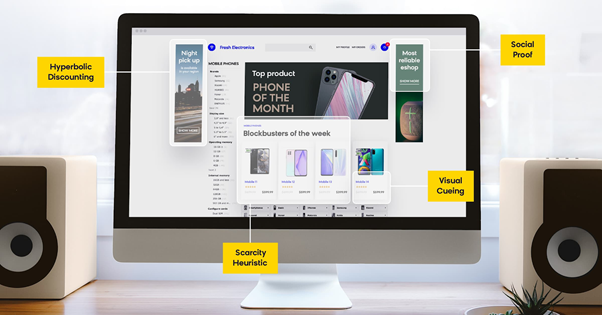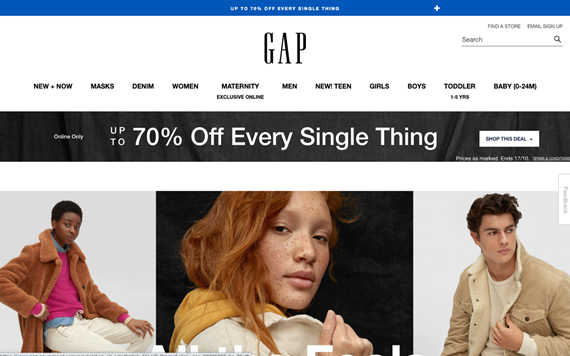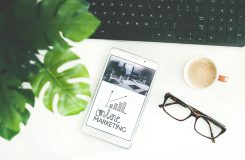When we speak face to face, we communicate in part through our words, our tone of voice and our body language. In total, only 7% of our communication is achieved verbally, while 55% is accomplished through body language and 38% through tone of voice. That means that when you communicate online, relying on words alone, you risk missing out on the majority of our powers of persuasion. The solution is to use marketing psychology to supercharge your communication and replace that 93%.
The good news is that techniques like hyperbolic discounting, loss aversion and FOMO — and the Von Restorff effect are more common and easier to implement than you might think.
More importantly, they are applicable to a wide range of consumer facing businesses. After all, the likelihood of the success boils down to one factor, — how well consumers purchase what you offer; your business.
Immediate rewards
Hyperbolic discounting is the practice of offering consumers an immediate reward rather than a long-term incentive.
It may surprise you to learn that behavioral studies show that most people will choose $50 today rather than $100 in six months. Interestingly, if you offer the same financial incentives but at 6-month and 12-month intervals, people will choose the latter.
In other words, it is the promise of getting a benefit at this exact moment, that is persuasive. The message to the consumer is that they are valued right here, right now, no strings attached.
Whenever you see a brand offering immediate discounts, they are taking part in hyperbolic discounting. As a customer, the offer is clear and uncomplicated. There’s no need to sign up for an annual subscription, or loyalty benefit. Instead, have a simple, easy to understand $5 off. If you were torn over whether to buy that $30 shirt, now it’s only $25.
Gap offering store wide discounts is an example of hyperbolic marketing. (Source: GAP)
Grow your data. Grow your community
Hyperbolic discounting also functions as a community building tool. Examples of this include offering discounts if users refer a friend. Businesses like AirBnB, Deliveroo, and others employ this approach.
You can also use it to gather data, which will provide deeper customer insight. You might offer a $5 voucher to visitors if they subscribe to your newsletter, helping you build up a mailing list.
You can also use that mailing list in tandem with viewed products or items left in a basket and target customers. For example, send a reminder email or reduction for this specific product. Writing a follow up email with text like “waiting for you”, can be the small nudge people need to complete a purchase.
It doesn’t have to be expensive
If you’re worried about the potential cost implications of hyperbolic discounting, you can mitigate this by providing clear terms and conditions. Many brands ensure that offers only apply to full price items, or limit referrals to one per customer.
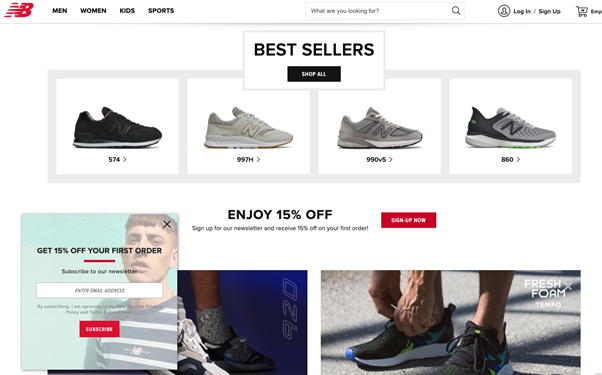
New Balance offers 15% off a first order if you sign up to their newsletter, but the offer only applies to full price items. (Source: New Balance)
Because buying into these kinds of deals is commitment free, this approach is particularly effective for capturing first time customers. Your targets are people who have been considering a purchase, or people who are coming across you for the first time and may need an incentive. That being said, it is also an effective way of increasing the total value of a loyal customer, who may buy more than they ordinarily would without a discount.
Equally, since these deals feel quick and easy to the consumer, they are also easily achieved during those moments of procrastination that research suggests most consumers indulge in during the day.
It doesn’t have to be a discount. Advertising an offer of free shipping, or free returns, can also be a way of lowering barriers to entry for new and returning clients alike. Highlighting these offers on your home page will help grab customers’ attention and reduce click away rates.
Face your fear (of missing out)
If hyperbolic discounting focuses on making the desirable seem easy, loss aversion or FOMO marketing is all about making things seem desirable in the first place. Thanks to the internet, and particularly to social media, global consumers are more attuned than ever before to the fear of missing out (FOMO). T
he reason for this is simple – we are more aware than ever of what others are doing or buying. Think about your Instagram feed, your Facebook wall, or even your LinkedIn account. All are full of exotic destinations, restaurants, shiny products, and recommendations for great new services. Together, these things have changed the way we shop.
FOMO marketing takes advantage of this cultural shift to increase conversion and minimize the number of consumers quitting during signup or leaving the site with a full basket before checkout.
The power of running out of stock
British sportswear brand Gymshark effectively used FOMO marketing as part of its rapid growth into a billion-dollar company. Its blackout sales were preceded by shutting down the website and showing only a timer counting down to the start of the sale. When users reached the checkout, they often found that many of the products in their basket were sold out.
Even those users who didn’t manage to buy what they wanted came back more determined to triumph in next year’s sale.
You can make the most of this technique, for example, by including out of stock items on the page. If you are concerned about frustrating customers, keep out of stock items at the bottom of the page.
Software like Exponea can also help by showing real-time inventory data as users browse the website. Airlines often do this, for example to show that there are only four seats left at a particular price.
Partnerships and word of mouth
All of this works for a simple reason. Scarcity breeds desire. Think of the long queues outside Apple stores when it releases a new phone. The resulting pictures and reports create further interest and encourage those thinking of buying later to do so faster.
Think of the race to get tickets for festivals. Even things that are difficult can benefit from this, for example challenges like Tough Mudder which offer early bird prices, or marathons which are oversubscribed year after year.
Former Fintech start-up and now established bank Monzo also channelled FOMO when it burst onto the scene. Monzo created a virtual queue for its signature coral cards. Cleverly, that queue could be skipped if customers had a golden ticket, which could only be given by another user. Monzo used this system to incentivize referrals and create word-of-mouth marketing.
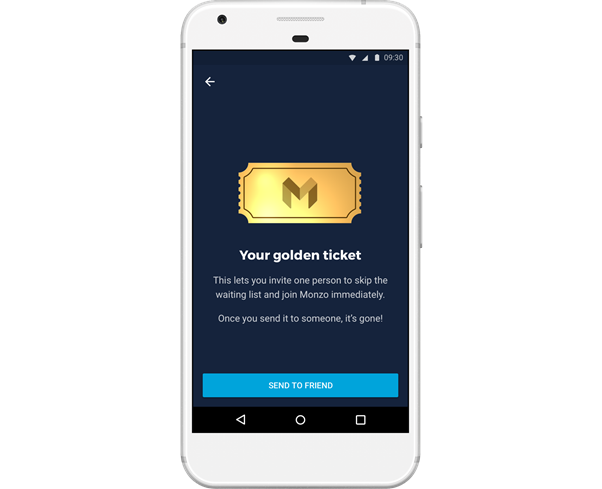
Monzo’s golden ticket created buzz and at times also worked in tandem with a referral bonus. (Source: Monzo)
Companies can also use FOMO to benefit from the marketing buzz around another brand. For example, phone companies often bundle free headphones, or subscriptions to services like Spotify, Now TV or Sky Go that consumers might otherwise consider unaffordable. In this scenario, both companies win, building on each other’s audiences and increasing the perceived value of their offer.
Make it easy for customers
FOMO also plays a role in disrupting industries. FOMO is actually driving customers to be less loyal to brands, because their chief concern is not the quality of what they know, but the worry that what they don’t know might be better. Because of this, it can also work well in harmony with some of the principles of hyperbolic discounting.
For example, to help convince potential customers to take the leap, reducing barriers to entry with free shipping and an attractive returns policy is critical.
Creating a minimalist customer journey is also crucial. This means smoothing the path from homepage to checkout so that consumers are encouraged to purchase or sign up quickly and easily. Software that allows customers to buy or sign up with one click works well too.
If you’re looking to get even more precise with your campaigns, bear in mind that some studies suggest people’s fear of missing out deepens later in the day and later in the week. This may be because we associate evenings and weekends with socializing, fun, and exciting experiences.
Creating visual change – the Von Restorff effect
Human beings are neurologically programmed to detect change. From our hunter / gatherer roots, we evolved to quickly notice differences in the world. Brands can take advantage of this by setting up their websites, or also their physical stores, in such a way that change is everywhere. Website designers are increasingly using asymmetrical design, or at least alternating text and images, to draw the eye around the page.
In e-commerce, this can be enhanced with the use of different fonts, colors and sizes to promote high-margin items. Or, you could use different-colored call to action buttons on products that your insights, perhaps generated by a Customer Data Platform (CDP), show often lead to cross-selling.
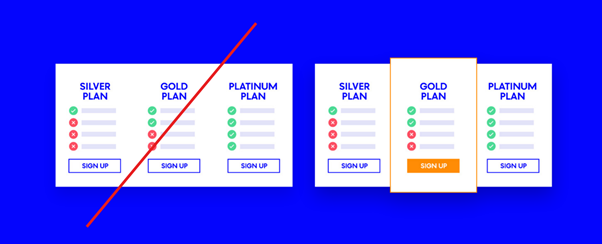
A different-colored call to action button can promote high-margin items. (Source: Exponea)
Your marketing doesn’t have to be the same as everyone else’s, it just has to be different from your standard content.
Make marketing psychology work for you
Your business is unique, and so are the ways in which you will be able to take advantage of these techniques. What is certain is that a clearer understanding of your customers and their psychology will enable you to communicate more effectively with them, almost as if you were face to face.
